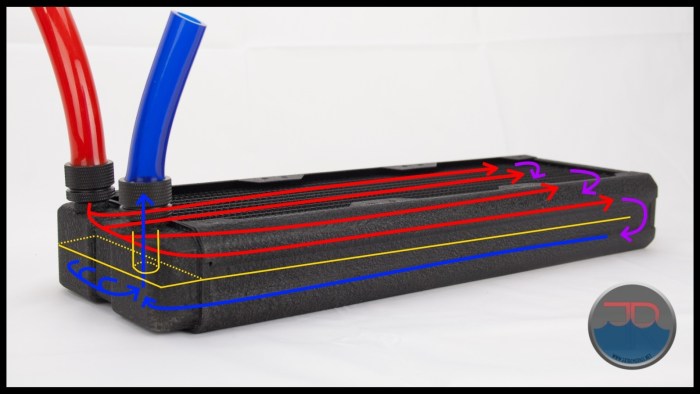- Dec 3, 2013
- 18
- 0
- 66
I'm trying to decide how to route the tubing in an upgrade. With my current system in a Lian-li PC-75, it goes pump>rad>CPU>GPU>pump. Since I was able to mount the rad with the connectors up front right above the pump, it was fairly simple. Especially since the rad is a U-flow type. I am unable to mount the radiator that way in the new case. Plus the design of it requires one port to be the input for optimum performance. This is basically how the water flows through it.

I could have the water flow the same way which would cause more tubes to cross each other. Or I could change the path to pump>GPU>rad>CPU>pump.
This is what it looks like so far. If I change the route, I can rotate the CPU block 180. The barb is on the input for the block. I marked the in and out for the radiator for optimum performance. The GPU has spots for connectors on the top and bottom. I plan on running the input or output on the bottom since the card will be higher than the connections on the pump.

Do you think changing it to pump>GPU>rad>CPU>pump is a good idea? Any other ideas that you can think of?

I could have the water flow the same way which would cause more tubes to cross each other. Or I could change the path to pump>GPU>rad>CPU>pump.
This is what it looks like so far. If I change the route, I can rotate the CPU block 180. The barb is on the input for the block. I marked the in and out for the radiator for optimum performance. The GPU has spots for connectors on the top and bottom. I plan on running the input or output on the bottom since the card will be higher than the connections on the pump.

Do you think changing it to pump>GPU>rad>CPU>pump is a good idea? Any other ideas that you can think of?


